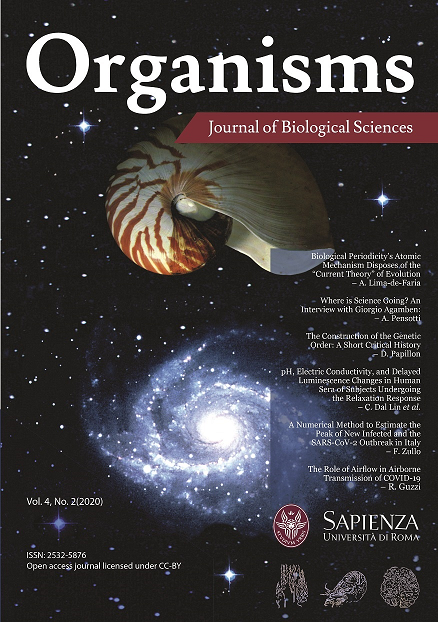The Role of Airflow in Airborne Transmission of COVID 19
DOI:
https://doi.org/10.13133/2532-5876/17224Abstract
The spreading of virus via air pathway has been investigated with simple examples using the Navier–Stokes equations and their application with uncompressible flow and in presence of convection due to heat transfer. Given the results, we argue that the minimum spacing for safety between persons depends on the ratio between the height and length of an artifact, here shown as a cavity box. We found that the best spacing among people is obtained when the ratio is 1:5. This means that the safety consists in staying as far away as possible or using mask properly. In case of confluence between street and square, the Navier–Stokes equations exhibit turbulence at the edges of the system.
References
Wang B, Wu H, Wan X-F (2020), “Transport and fate of
human expiratory droplets—A modeling approach,
Physics of Fluids, vol. 32, 083307. Available from: https://
doi.org/10.1063/5.0021280
Burgio E et al.(2020) COVID-19 (27 Aprile 2020) “Covid-19: The Italian drama”, Epigenetwork[online] https://
www.epigenetwork.it/2020/04/25/covid-19-the-italian-drama/
Chin A W H et al.(2020). “Stability of SARS- CoV-2 in
different environmental conditions” Lancet Microbe,
vol 1, no. 1, E10. Available from: https://www.thelancet.com/journals/lanmic/article/PIIS2666-5247(20)30003-3/fulltext
De Vahl D G (1983), “Natural Convection of Air in a Square
Cavity: A Benchmark Numerical Solution”, International Journal for Numerical Methods in Fluids, vol. 3,
pp. 249–264
Grossmann S & Lohse D (2002), “Prandtl and Rayleigh number dependence of the Reynolds number in turbulent thermal convection”, Physical Review E, vol. 66, no. 1, 016305
Liu Y et al.(2020), “Aerodynamic analysis of SARS-CoV-2
in two Wuhan hospitals”, Nature, vol. 582, pp. 557 –560.
DOI: 10.1038/s41586-020-2271-3
Kane M K et al.(2017), “A study of natural convection of
air in a square cavity with partially thermally active side
walls”, Open Journal of Fluid Dynamics, vol. 7, no. 4, pp.
–641
Zhang R et al.(2020) “Identifying airborne transmission as
the dominant route for the spread of COVID-19” PNAS,vol. 117, no. 26, pp. 14857-14863. Available from: www.
pnas.org/cgi/doi/10.1073/pnas.2009637117
van Doremalen N, Bushmaker T, & Morris D H (2020), “Aerosol and surface stability of SARS-CoV-2 as compared with SARS-CoV-1”, The New England Journal of Medicine, vol. 382, pp. 1564–1567. DOI: 10.1056/NEJMc2004973
Zhao Y et al.(2019) “Airborne transmission may have played a role in the spread of 2015 highly pathogenic avian influenza outbreaks in the United States”, Scientific Reports, vol. 9, 11755. Available from: https://www.nature.com/articles/s41598-019-47788-z#citeas
Downloads
Published
How to Cite
Issue
Section
License
Copyright Agreement with Authors
Before publication, after the acceptance of the manuscript, authors have to sign a Publication Agreement with Organisms. The authors retain all rights to the original work without any restrictions.
License for Published Contents

You are free to copy, distribute and transmit the work, and to adapt the work. You must attribute the work in the manner specified by the author or licensor (but not in any way that suggests that they endorse you or your use of the work).





